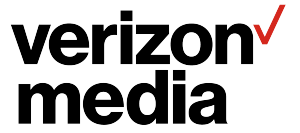
After more than 40 years of operation, DTVE is closing its doors and our website will no longer be updated daily. Thank you for all of your support.
Why the COVID-19 pandemic has been an accelerator – not transformer – of sports broadcasting
 The future of sports broadcasting was thrust into the spotlight during the unexpected shutdown caused by the COVID-19 pandemic. But while most of the column inches have been dedicated to the nature of rights arrangements and recouping some of the money splashed out on these multi-billion pound deals, professionals on the technical side of broadcasting have had their own share of headaches to deal with.
The future of sports broadcasting was thrust into the spotlight during the unexpected shutdown caused by the COVID-19 pandemic. But while most of the column inches have been dedicated to the nature of rights arrangements and recouping some of the money splashed out on these multi-billion pound deals, professionals on the technical side of broadcasting have had their own share of headaches to deal with.
“When we think about streaming live sports or live events there’s really three key parts we look at,” Verizon Media’s head of video product management Darren Lepke tells Digital TV Europe.
”We look at the process of getting streams out of the venue – so how do you take the multiple camera angles that have gone to an on-site director out of the stadium and back to HQ. In step two you’re doing more things like adding more on-screen graphics, kicking over to the in-studio team and going to ad breaks, and transforming the content even further. Step three is the distribution. In a traditional broadcast sense you’d then send that out to a satellite provider or cable head-end – or in the case of OTT then broadcast that across the web. When it comes to the COVID-19 pandemic, we’ve seen challenges at all three steps at that process – mostly due to the fact that you are limited in your ability to send staff to a venue or staff to the HQ to operate the tools which for many years have been a very hands-on process.”
But as the old saying goes, when a door closes, a window opens – and the window in question presents a view of live sports from the cloud. The restrictions imposed by COVID-19 have led to a surge in interest in migrating to cloud-based delivery of live sports.
Lepke explains: “We’ve really seen the pandemic not as a transformational event, but really more of an accelerator. It’s driving forward trends that have already been in the works for many years but are now being pulled forward 12-24 months.”
These trends are largely based around moving from on-premise equipment and hands-on tools to the cloud and virtualised environments.
The product management head goes on to say that “across all those things we are helping our customers continue those trends,” through the leveraging of existing fibre connections, sending the streams directly to the cloud and, “in the near future,” 5G.
Headend in the clouds
But it’s not just the delivery methods that are being transformed, Lepke says. “All the tools around producing events, switching angles and adding graphics are being virtualised and moved to the cloud. If you can get the streams out the venue then you also have the opportunity to manipulate and produce them in the cloud as well.
“We’re seeing a lot more of our large sports customers where the director rather than being in a lorry on-site in the stadium is now in their living room doing the same job – but virtually.”
In terms of the content distribution, changing consumption patterns also mean that cloud delivery is becoming necessary. Lepke says that “we are continuously trending away from satellite distribution and cable subscriptions to OTT” with an “explosion in viewing” from connected TVs and mobile devices.
For Verizon Media then, Lepke says that “in terms of enhancing the performance of the downstream distribution it’s the same story we’ve been working on for years.”
One thing that Lepke does stress however is that there should not be trade-offs for users viewing content via OTT rather than traditional broadcast. Streaming viewers now demand broadcast-quality experience.
“Fans are used to an experience from satellite providers where you don’t get buffering and interruptions. Those are essential for the streaming experience as well,” he says.
A balancing act
Going forward, the aim for sports broadcasters is not to just give viewers a comparable experience to watching on traditional TV but provide a “more enriching” one which capitalises on the flexibility of OTT and the digital tools it provides.
“The environment is becoming more complex in terms of the requirements for distribution. In the early days of OTT, the big accomplishment was delivering a stream to a broadcaster’s owned and operated website or app, but there is now an emerging ecosystem of additional distribution partners,” Lepke says.
This all comes with a number of benefits (“more content licencing and more opportunities for advertising and fan engagement,” Lepke says) but also challenges of “having to deal with all the complexity of those distribution endpoints.”
Lepke explains one of the key challenges thus: “The internet is not like the broadcast world where there is one standard for your video codecs and transport stream. Each one of those providers have different metadata requirements and different stream format requirements.
“Being able to distribute them can make you more money, but it’s also some additional operational overhead associated with actually making that work.”
Verizon Media itself aims to simplify the OTT workflow and remove some of those complexities from the equation via aspects like broadcast playout system integration and server side ad-insertion.
It does not take much analysis to see that OTT is becoming the preferred method of sports watching for many consumers. In the UK, the growth of Sky’s Now TV and BT Sport’s recent introduction of no-contract monthly passes, along with the international expansion of DAZN and the prominent placement of live sports in NBCUniversal’s US streamer Peacock show that this is what consumers want.
COVID-19 may have accelerated this, but it was a pre-existing trend nonetheless and, as Lepke says, operators must not “lose sight of the needs of the fans themselves; the consumers of these live events.”
“From our partners and customers, we see a willingness now more than ever to experiment and provide more interactivity for the fans themselves in the downstream viewing experience on their devices. For us that means giving the viewers more control over what they see in the games.”
This is sponsored content



